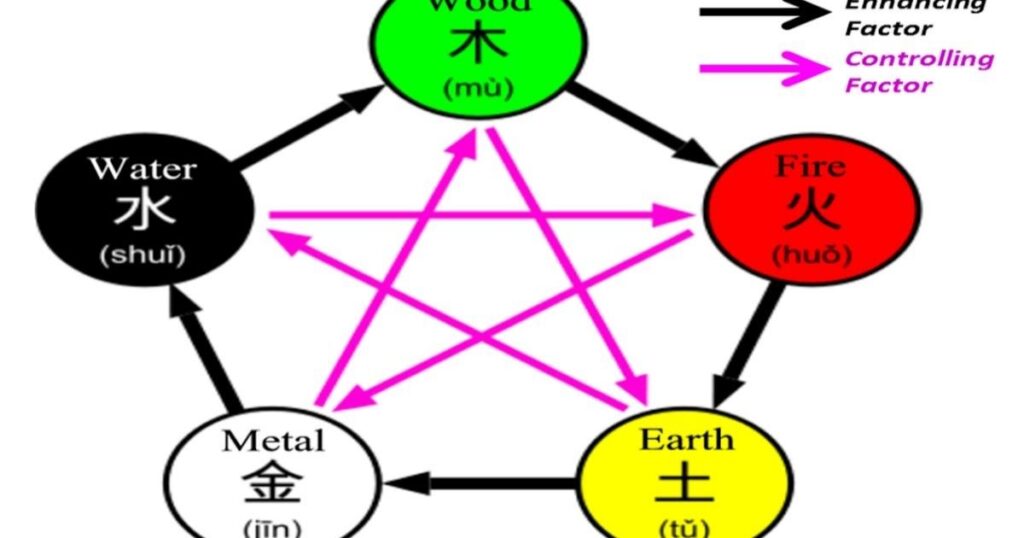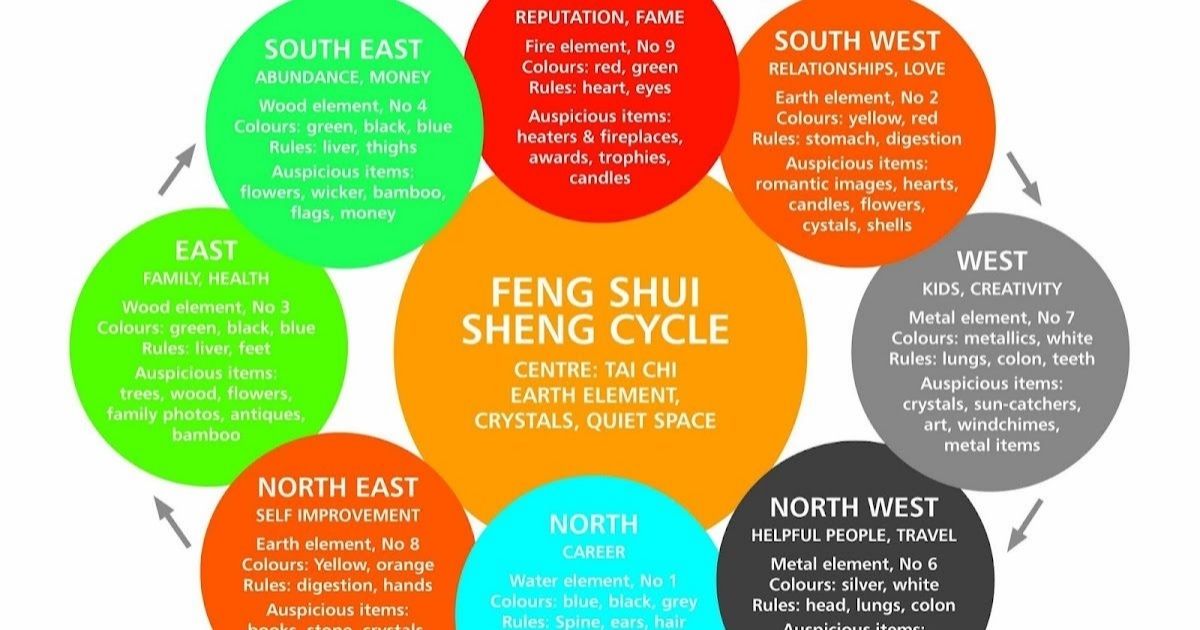What Is Feng Shui?
Feng shui is the ancient Chinese practice of arranging your living and working spaces in a way that promotes the flow of positive energy, or “chi.” The term “feng shui” literally translates to “wind-water” in English, reflecting the belief that the ideal placement of objects and buildings can harness the natural forces of the environment.
At its core, feng shui is about creating balance and harmony between an individual and their surrounding environment. By thoughtfully positioning furniture, decor, and even the orientation of a building, feng shui practitioners aim to harness the natural energy currents that flow through a space. The goal is to maximize the beneficial “chi” and minimize any stagnant or negative energy.
Feng shui has its origins in Taoism, an ancient Chinese philosophy that emphasizes living in harmony with the natural world. The principles of feng shui are based on the Taoist understanding of the interconnectedness of all things, as well as the five fundamental elements – wood, fire, earth, metal, and water.
Incorporating feng shui principles into your home or workspace can have a profound impact on your overall wellbeing, productivity, and prosperity. By creating a living environment that is in sync with the natural flows of energy, you can increase feelings of calm, focus, and abundance in your daily life.
Principles of Feng Shui
There are several key principles that form the foundation of feng shui. Understanding these core concepts is essential for successfully applying feng shui principles in your home or office.
Chi
The most fundamental principle in feng shui is chi, which refers to the vital life force or energy that flows through all living things. Chi is believed to be the animating force behind everything in the universe, from the smallest subatomic particle to the largest celestial body.
In the context of feng shui, chi is the energy that circulates through your home or workspace. Ideally, this chi should flow freely and harmoniously, promoting a sense of vitality and nourishment. However, when chi becomes stagnant or disrupted, it can lead to feelings of stagnation, discomfort, and even illness.
Feng shui practitioners work to optimize the flow of chi through a space, using techniques like furniture placement, color schemes, and the incorporation of natural elements. The goal is to create an environment where the chi can circulate easily, supporting the health and wellbeing of the occupants.
Commanding Position
The concept of the “commanding position” is a key principle in feng shui. This refers to the ideal spot in a room from which you can observe your surroundings, with a clear view of the entrance or doorway.
According to feng shui, the commanding position is the most empowered and energetically balanced spot in a room. It’s the place where you’ll want to position your bed, desk, or other important furniture, as it allows you to maintain control and awareness of your environment.
The commanding position is typically located diagonally across from the room’s entrance, rather than directly in line with the door. This positioning allows you to see who is entering the space without feeling vulnerable or exposed.
Placing yourself in the commanding position is believed to enhance your sense of security, focus, and control over your environment. It’s an important feng shui principle for creating a harmonious and supportive living or work space.
Bagua
The bagua is a crucial feng shui tool that represents the eight areas of life, including wealth, relationships, career, and more. The bagua is a grid-like map that is superimposed over the floor plan of a space, with each section corresponding to a different aspect of human experience.
By understanding the bagua and how it relates to the layout of your home or office, you can strategically place objects, colors, and other design elements to enhance the energy in the areas of your life that need the most attention.
For example, placing lush, vibrant plants in the “wealth” area of your home can help to cultivate a sense of abundance and prosperity. Or arranging your desk in the “career” sector of your office can support your professional growth and success.
The bagua is a powerful tool for aligning your living and working environments with your personal goals and aspirations. By thoughtfully arranging the elements in your space according to the bagua, you can create a nurturing, supportive atmosphere that enhances your overall wellbeing.
The Five Elements
Another fundamental principle of feng shui is the five elements: wood, fire, earth, metal, and water. These five elements are believed to be the building blocks of the universe, and they play a crucial role in shaping the energetic landscape of a space.
Each of the five elements has its own unique qualities, associations, and visual representations. For example, the wood element is associated with growth, expansion, and new beginnings, while the fire element represents passion, creativity, and transformation.
When designing a space using feng shui principles, it’s important to strive for a harmonious balance of the five elements. This might involve incorporating natural materials like wood and stone, using colors that correspond to the different elements, or strategically placing objects that symbolize the various elements.
By balancing the five elements in your living or work environment, you can create a sense of wholeness, stability, and dynamism. This, in turn, can support your personal growth, creativity, and overall wellbeing.
Chi in Feng Shui

As mentioned earlier, chi – or vital life force energy – is the most fundamental principle in feng shui. Optimizing the flow of chi through a space is at the heart of all feng shui practices.
When chi is flowing freely and harmoniously, the environment feels vibrant, nourishing, and supportive. However, when chi becomes stagnant or disrupted, it can lead to feelings of discomfort, lethargy, or even illness.
Also read this post:Creeping Thyme
There are a few key factors that can impact the flow of chi in a space:
Space and Clutter: A large, open room with minimal furniture can actually create an overwhelming sense of chi, leading to feelings of disorientation or unease. Conversely, a small, cluttered space with too many objects can cause the chi to become stagnant and trapped.
The ideal is to find a balance, where the chi can circulate freely without feeling overbearing or constrained. Decluttering and mindfully arranging your furnishings can go a long way in optimizing the flow of chi.
Lighting: The quality and direction of lighting in a space also plays a crucial role in chi. Bright, natural light is generally considered the most beneficial, as it nourishes and invigorates the chi. Harsh, artificial lighting, on the other hand, can disrupt the natural flow of energy.
Elemental Balance: As mentioned earlier, maintaining a harmonious balance of the five elements – wood, fire, earth, metal, and water – is essential for supporting the flow of chi. Incorporating elements through colors, textures, and natural materials can help to create a more vibrant, dynamic energy in a space.
By paying attention to these factors and making adjustments as needed, you can cultivate a living or work environment that is rich in positive, life-affirming chi. This, in turn, can have a profound impact on your overall health, productivity, and sense of wellbeing.
The Commanding Position
The concept of the “commanding position” is a critical principle in feng shui. This refers to the ideal spot in a room from which you can observe your surroundings with a clear view of the entrance or doorway.
According to feng shui principles, the commanding position is the most empowered and energetically balanced spot in a room. It’s the place where you’ll want to position your bed, desk, or other important furniture, as it allows you to maintain control and awareness of your environment.
The commanding position is typically located diagonally across from the room’s entrance, rather than directly in line with the door. This positioning allows you to see who is entering the space without feeling vulnerable or exposed.
Placing yourself in the commanding position is believed to enhance your sense of security, focus, and control over your environment. It’s an important feng shui principle for creating a harmonious and supportive living or work space.
When determining the commanding position in a room, consider the following guidelines:
- The spot should be farthest from the door, but not directly in line with it
- You should have a clear, unobstructed view of the entrance
- The position should allow you to feel protected, with your back against a solid wall or piece of furniture
- Avoid placing the commanding position directly in front of a window, as this can create a sense of vulnerability
By positioning yourself in the commanding position, you can tap into the powerful energetic currents that flow through a space. This, in turn, can boost your feelings of confidence, productivity, and overall wellbeing.
The Feng Shui Bagua Map

The bagua is a crucial feng shui tool that represents the eight areas of life, including wealth, relationships, career, and more. The bagua is a grid-like map that is superimposed over the floor plan of a space, with each section corresponding to a different aspect of human experience.
By understanding the bagua and how it relates to the layout of your home or office, you can strategically place objects, colors, and other design elements to enhance the energy in the areas of your life that need the most attention.
There are several schools of thought when it comes to applying the bagua, each with its own unique approach:
Western and BTB (Black Sect) Schools: These schools typically align the bagua so that the “knowledge,” “career,” and “helpful people” areas correspond with the entrance or front door of a space.
Flying Stars and Classical Schools: These schools may orient the bagua based on the energetic currents of the year or the compass directions, rather than the placement of the entrance.
Regardless of the specific approach, the basic principle is the same: by aligning your living and working environments with the energetic map of the bagua, you can cultivate a greater sense of balance, harmony, and fulfillment in your life.
The Bagua Areas
The bagua map is divided into nine distinct areas, each of which corresponds to a different aspect of human experience. Here’s a closer look at each of these energetic zones:
Family (Zhen)
- Representing: Family, new beginnings
- Shape: Columnar, rectangular
- Colors: Green, blues, teal
- Season: Spring
- Number: 4
- Element: Yang wood
Wealth (Xun)
- Representing: Wealth, abundance, prosperity
- Shape: Columnar, rectangular
- Colors: Purple
- Season: Spring
- Number: 5
- Element: Yin wood
Health (Tai Qi)
- Representing: Overall wellness, the center
- Shape: Flat, square
- Colors: Brown, orange, yellow
- Season: Transitions between the seasons
- Number: 5
- Element: Earth
Helpful People (Qian)
- Representing: Helpful people, benefactors, travel
- Shape: Circular, spherical
- Colors: Gray, metallics
- Season: Autumn
- Number: 6
- Element: Yang metal
Children (Dui)
- Representing: Children, completion, joy
- Shape: Circular, spherical
- Colors: White, metallics
- Season: Autumn
- Number: 7
- Element: Yin metal
Knowledge (Gen)
- Representing: Knowledge, self-cultivation, skillfulness
- Shape: Flat, square
- Colors: Dark blue
- Season: Transitions between the seasons
- Number: 8
- Element: Yang earth
Fame (Li)
- Representing: Fame, reputation, passion, visibility
- Shape: Triangle, pointy
- Colors: Red
- Season: Summer
- Number: 9
- Element: Fire
Career (Kan)
- Representing: Career, path in life
- Shape: Wavy, curvy
- Colors: Black
- Season: Winter
- Number: 1
- Element: Water
Partnerships (Kun)
- Representing: Partnerships, marriage, self-care
- Shape: Flat, square
- Colors: Pink
- Season: Transitions between the seasons
- Number: 2
- Element: Yin earth
When applying feng shui principles to your home or office, it’s important to focus on one to three key areas at a time, rather than trying to address all nine bagua zones at once. This allows you to make impactful changes without feeling overwhelmed.
Start by identifying the areas of your life that need the most attention, and then consciously incorporate the corresponding colors, shapes, and elements into those spaces. Over time, this intentional approach can help to cultivate greater balance, harmony, and fulfillment in all aspects of your life.
The Five Elements

Another fundamental principle of feng shui is the five elements: wood, fire, earth, metal, and water. These five elements are believed to be the building blocks of the universe, and they play a crucial role in shaping the energetic landscape of a space.
Each of the five elements has its own unique qualities, associations, and visual representations:
Wood
- Qualities: Expansive, vitality, upward
- Shape: Columnar, rectangular
- Colors: Green, blues
- Season: Spring
- Associated Areas: Family, wealth
Fire
- Qualities: Passion, illuminating, brilliant
- Shape: Triangle, pointy
- Colors: Red
- Season: Summer
- Associated Area: Fame
Earth
- Qualities: Grounded, self-care, stable
- Shape: Flat, square
- Colors: Brown, orange, yellow
- Season: Transitions between the seasons
- Associated Areas: Health, knowledge, partnerships
Metal
- Qualities: Efficient, precise, beauty
- Shape: Circular, spherical
- Colors: White, metallics
- Season: Autumn
- Associated Areas: Helpful people, children
Water
- Qualities: Downward, flowing, shifting
- Shape: Wavy, curvy
- Colors: Black
- Season: Winter
- Associated Area: Career
When designing a space using feng shui principles, it’s important to strive for a harmonious balance of the five elements. This might involve incorporating natural materials like wood and stone, using colors that correspond to the different elements, or strategically placing objects that symbolize the various elements.
By balancing the five elements in your living or work environment, you can create a sense of wholeness, stability, and dynamism. This, in turn, can support your personal growth, creativity, and overall wellbeing.
Tips to Feng Shui Your Home
Now that you have a solid understanding of the key principles of feng shui, here are some practical tips for applying these concepts in your home:
Decorate with Plants: Feng shui plants, especially those with soft, rounded leaves like the money plant, can help to nourish the positive chi in a space.
Consider Positioning: Be mindful of where you place key furniture like your bed, desk, and stove. Try to position these items in the commanding position for optimal feng shui.
Balance Colors: Identify the bagua areas you want to focus on, and incorporate the corresponding colors to strengthen the energy in those zones.
Declutter: Excessive clutter can cause chi to become stagnant. Make a conscious effort to clear out any unnecessary items or “energy blocks.”
Keep Traffic Flows Open: Avoid placing furniture or decor that obstructs the natural pathways through a room or home. Allow chi to circulate freely.
Fix Broken Things: Repair any broken or damaged items in your home, as these can disrupt the flow of positive energy.
Incorporate the Five Elements: Use the five elements (wood, fire, earth, metal, water) to create a balanced, harmonious environment. Pay attention to the shapes, colors, and materials you choose.
Optimize the Entryway: As the entry point for chi, your home’s entryway should be warm, bright, and clutter-free to welcome positive energy.
Maximize Natural Light: Sunlight is considered highly beneficial in feng shui. Position furniture and decor to take advantage of natural illumination.
By making strategic adjustments to your living space based on these feng shui principles, you can create an environment that supports your overall wellbeing, prosperity, and sense of harmony.
More from The Spruce
- The Bagua: The Feng Shui Energy Map](https://www.thespruce.com/what-is-the-feng-shui-bagua-1274504)
- The 5 Elements of Feng Shui](https://www.thespruce.com/the-five-elements-in-feng-shui-1274504)
- Feng Shui for the Bedroom](https://www.thespruce.com/feng-shui-for-the-bedroom-1274757)
- Feng Shui Plants for Your Home](https://www.thespruce.com/feng-shui-plants-for-the-home-1275059)
- Feng Shui Mirrors: Placement and Purpose](https://www.thespruce.com/feng-shui-mirrors-placement-and-purpose-1275061)
FAQs:
What are the 5 principles of Feng Shui?
The five key principles of Feng Shui are chi, the commanding position, the bagua, the five elements, and the balance of yin and yang. These principles work together to create harmony and balance in a living or working space.
What is the basic Feng Shui theory?
The basic theory behind Feng Shui is that the placement and arrangement of objects, furniture, and architecture can influence the flow of chi, or vital life energy, within a space. By optimizing this flow of energy, Feng Shui practitioners believe they can improve the health, wealth, and well-being of the occupants.
What is the basic belief of Feng Shui?
The basic belief in Feng Shui is that humans are inextricably connected to and influenced by the natural world around them. The goal of Feng Shui is to create living and working environments that are in harmony with these natural energies, supporting the occupants’ overall wellbeing.
What are the basic elements of Feng Shui?
The five basic elements in Feng Shui are wood, fire, earth, metal, and water. These elements are believed to be the building blocks of the universe and are used to balance the energy in a space. Incorporating the appropriate elements through colors, shapes, and materials is a key component of Feng Shui design.











